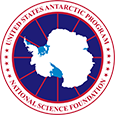This photo is in the public domain.
Photos whose copyright has expired or were taken by government employees as part of their job duties are considered to be in the public domain. Public domain
works are not subject to copyright laws. Anyone may download these photos and use them freely, even for commercial purposes.
Attribution is not legally required for public domain photos but is strongly recommended.
This photo is covered by a Creative Commons license. Please see the Usage and Submissions page for more information. Use of this photo requires the following:
(1.) The user must give appropriate credit to the photographer and the National Science Foundation (NSF) and provide a
link to the Creative Commons license.
(2.) Use of the photo must be for non-commercial purposes only. (3.) No derivative works may be made with the original photo
without the explicit permission of the photographer.




